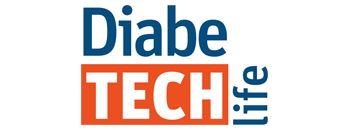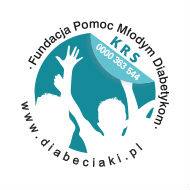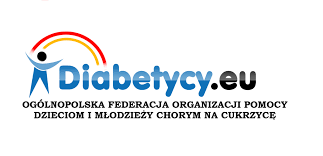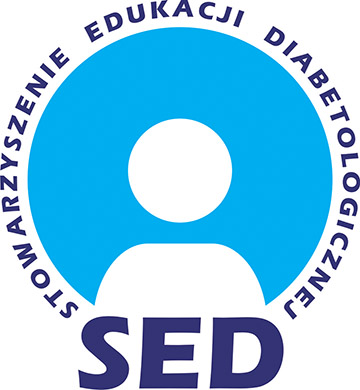Dlaczego poposiłkowa hiperglikemia zasługuje na uwagę lekarza praktyka?
Piśmiennictwo
1.Dinneen S, Gerich J, Rizza R. Carbohydrate metabolism in non-insulin-dependent diabetes mellitus. New Engl J Med 1992;327:707–13
2.Wolever TM, Chiasson JL, Csima A et al. Variation of postprandial plasma glucose, palatability, and symptoms associated with a standardized mixed test meal versus 75 g oral glucose. Diabetes Care 1998;21:336–40
3.Rizkalla SW, Bellisle F, Slama G. Health benefits of low glycaemic index foods, such as pulses, in diabetic patients and healthy individuals. Br J Nutr 2002;88 (Suppl. 3):S255–62
4.Horowitz M, Odonovan D, Jones KL et al. Gastric emptying in diabetes. Clinical significance and treatment. Diabet Med 2002;19:177–94
5.Polskie Towarzystwo Diabetologiczne. Zalecenia kliniczne dotyczące postępowania u chorych na cukrzycę 2008. Diabet Prakt, 2008;9 supl. A
6.International Diabetes Federation. Wytyczne dotyczące kontroli poposiłkowego stężenia glukozy 2008. http://www.idf.org
7.Bonora E, Muggeo M. Postprandial blood glucose as a risk factor for cardiovascular disease in type II diabetes: the epidemiological evidence. Diabetologia 2001;44:2107-14
8.Meigs JB, Nathan DM, D’Agostino RB Sr et al. Fasting and postchallenge glycemia and cardiovascular disease risk: the Framingham Offspring Study. Diabetes Care 2002;25:1845-50
9.De Vegt F, Dekker JM, Ruhe HG et al. Hyperglycemia is associated with all-cause and cardiovascular mortality in the Hoorn population: the Hoorn Study. Diabetologia 1999;42:926-31
10.Barrett-Connor E, Ferrara A. Isolated postchallenge hyperglycemia and the risk of fatal cardiovascular disease in older women and men. Diabetes Care 1998;21:1236-9
11.The DECODE Study Group. Glucose tolerance and mortality:comparison of WHO and American Diabetes Association diagnostic criteria. Lancet 1999;354:617-21
12.Balkau B, Shipley M, Jarrett RJ et al. High blood glucose concentration is a risk factor for mortality in middle-aged nondiabetic men:20-year follow-up in the Whitehall Study, the Paris Prospective Study, and the Helsinki Policemen Study. Diabetes Care 1998;21:360-7
13.Coutinho M, Gerstein HC, Wang Y et al.. The relationship between glucose and incident cardiovascular events: a metaregression analysis of published data from 20 studies of 95,783 individuals followed for 12.4 years. Diabetes Care 1999;22:233-40
14.Hanefeld M, Fischer S, Julius U et al. Risk factors for myocardial infarction and death in newly detected NIDDM;the Diabetes Intervention Study, 11-year follow-up. Diabetologia 1996;39:1577-1583
15.Cavalot F, Petrelli A, Traversa M et al. Postprandial blood glucose is stronger predictor of cardiovascular events than fasting blood glucose in Type 2 diabetes mellitus, particularly in women. J Clin Endocrinol Metab 2006;91:813-19
16.Sorkin JD, Muller DC, Fleg JL et al. The relation of fasting and 2-h postchallenge plasma glucose concentrations to mortality: data from the Baltimore Longitudinal Study of Aging with a critical review of the literature. Diabetes Care 2005;28(11):2626-2632
17.Shichri M, Kishikawa H, Ohkubo Y et al. Long term results of the Kumamoto Study on optimal diabetes control in type 2 diabetic patients. Diabetes Care 2000;23, suppl 2, B21-B29
18.Malmberg K for the DIGAMI Study Group. Prospective randomised study of intensived insulin treatment on long term survival after acute myocardial infarction in patients with diabetes mellitus. BMJ 1997;314:1512-1515
19.Chiasson JL, Josse RG, Gomis R et al ;STOP-NIDDM Trial Research Group. Acarbose treatment and the risk of cardiovascular disease and hypertension in patients with impaired glucose tolerance: the STOPNIDDM trial. JAMA 2003;290:486-94
20. Zeymer U, Schwarzmaier-D'assie A, Petzinna D et al. STOPNIDDM Trial Research Group. Effect of acarbose treatment on the risk of silent myocardial infarctions in patients with impaired glucose tolerance: results of the randomised STOP-NIDDM trial electrocardiography substudy. Eur J Cardiovasc Prev Rehabil 2004;11:412-15
21.Esposito K, Giugliano D, Nappo F et al. Regression of carotid atherosclerosis by control of postprandial hyperglycemia in type 2 diabetes mellitus. Circulation 2004;29:2978-84
22.Nakagami T, Qiao Q, Tuomilehto J et al. Screen-detected diabetes, hypertension and hypercholesterolemia as predictors of cardiovascular mortality in five populations of Asian origin:the DECODA study. Eur J Cardiovasc Prev Rehabil 2006;13(4):555-561
23.Shiraiwa T, Kaneto H, Miyatsuka T et al. Post-prandial hyperglycemia is an important predictor of the incidence of diabetic microangiopathy in Japanese type 2 diabetic patients. Biochem Biophys Res Commun 2005;336(1):339-345
24.Gapstur SM, Gann PH, Lowe W et al. Abnormal glucose metabolism and pancreatic cancer mortality. JAMA 2000;283(19):2552-2558
25.Larsson SC, Bergkvist L, Wolk A. Consumption of sugar and sugar-sweetened foods and the risk of pancreatic cancer in a prospective study. Am J Clin Nutr 2006;84(5):1171-1176
26.Monnier L, Mas E, Ginet C et al. Activation of oxidative stress by acute glucose fluctuations compared with sustained chronic hyperglyc mia in patients with type 2 diabetes. JAMA 2006;295(14):1681-1687
27.Brownlee M. Biochemistry and molecular cell biology of diabetic complications. Nature 2001;414:813-20
28.Quagliaro L, Piconi L, Assaloni R et al. Intermittent high glucose enhances apoptosis related to oxidative stress in human umbilical vein endothelial cells:the role of protein kinase C and NAD(P)H-oxidase activation. Diabetes 2003;52(11):2795-2804
29.Ceriello A. New insights on oxidative stress and diabetic complications may lead to a “causal” antioxidant therapy. Diabetes Care 2003;26:1589-96
30.Quagliaro L, Piconi L, Assaloni R et al. Intermittent high glucose enhances ICAM-1, VCAM-1 and E-selectin expression in human umbilical vein endothelial cells in culture: the distinct role of protein kinase C and mitochondrial superoxide production. Atherosclerosis 2005;183:259-67
31.Ceriello A, Bortolotti N, Motz E et al. Meal-induced oxidative stress and low-density lipoprotein oxidation in diabetes: the possible role of hyperglycemia. Metabolism 1999;48:1503-08
32.Ceriello A, Quagliaro L, D'Amico M et al. Acute hyperglycemia induces nitrotyrosine formation and apoptosis in perfused heart from rat. Diabetes 2002;51:1076-82
33.Piconi L, Quagliaro L, Assaloni R et al. Constant and intermittent high glucose enhances endothelial cell apoptosis through mitochondrial superoxide overproduction. Diabetes Metab Res Rev 2006;22:198-203
34.Ceriello A. Postprandial hyperglycemia and diabetes complications. Is it time to treat? Diabetes 2005;54:1-7
35.Nomiyama T, Igarashi Y, Taka H et al. Reduction of insulin-stimulated glucose uptake by peroxynitrite is concurrent with tyrosine nitration of insulin receptor substrate-1. Biochem Biophys Res Comm 2004;320:639-47
36.Khatri JJ, Johnson C, Magid R et al. Vascular oxidant stress enhances progression and angiogenesis of experimental atheroma. Circulation 2004;109(4):520-525
37.Gandrud LM, Xing D, Kollman C et al.The Medtronic Minimed Gold continuous glucose monitoring system: an effective means to discover hypo- and hyperglycemia in children under 7 years of age. Diabetes Technol Ther. 2007;9:307-16
38.Yamanouchi T, Tachibana Y, Akanuma H et al. Origin and disposal of 1,5-anhydroglucitol, a major polyol in the human body. Am J Physiol 1992;263:E268-273
39.Derr R, Garrett E, Stacy GA et al. Is HbA(1c) affected by glycemic instability? Diabetes Care 2003;26(10):2728-33
40.Dworacka M, Winiarska H. The application of plasma 1,5-anhydro-D-glucitol for monitoring type 2 diabetic patients. Dis Markers 2005;21(3):127-132
2.Wolever TM, Chiasson JL, Csima A et al. Variation of postprandial plasma glucose, palatability, and symptoms associated with a standardized mixed test meal versus 75 g oral glucose. Diabetes Care 1998;21:336–40
3.Rizkalla SW, Bellisle F, Slama G. Health benefits of low glycaemic index foods, such as pulses, in diabetic patients and healthy individuals. Br J Nutr 2002;88 (Suppl. 3):S255–62
4.Horowitz M, Odonovan D, Jones KL et al. Gastric emptying in diabetes. Clinical significance and treatment. Diabet Med 2002;19:177–94
5.Polskie Towarzystwo Diabetologiczne. Zalecenia kliniczne dotyczące postępowania u chorych na cukrzycę 2008. Diabet Prakt, 2008;9 supl. A
6.International Diabetes Federation. Wytyczne dotyczące kontroli poposiłkowego stężenia glukozy 2008. http://www.idf.org
7.Bonora E, Muggeo M. Postprandial blood glucose as a risk factor for cardiovascular disease in type II diabetes: the epidemiological evidence. Diabetologia 2001;44:2107-14
8.Meigs JB, Nathan DM, D’Agostino RB Sr et al. Fasting and postchallenge glycemia and cardiovascular disease risk: the Framingham Offspring Study. Diabetes Care 2002;25:1845-50
9.De Vegt F, Dekker JM, Ruhe HG et al. Hyperglycemia is associated with all-cause and cardiovascular mortality in the Hoorn population: the Hoorn Study. Diabetologia 1999;42:926-31
10.Barrett-Connor E, Ferrara A. Isolated postchallenge hyperglycemia and the risk of fatal cardiovascular disease in older women and men. Diabetes Care 1998;21:1236-9
11.The DECODE Study Group. Glucose tolerance and mortality:comparison of WHO and American Diabetes Association diagnostic criteria. Lancet 1999;354:617-21
12.Balkau B, Shipley M, Jarrett RJ et al. High blood glucose concentration is a risk factor for mortality in middle-aged nondiabetic men:20-year follow-up in the Whitehall Study, the Paris Prospective Study, and the Helsinki Policemen Study. Diabetes Care 1998;21:360-7
13.Coutinho M, Gerstein HC, Wang Y et al.. The relationship between glucose and incident cardiovascular events: a metaregression analysis of published data from 20 studies of 95,783 individuals followed for 12.4 years. Diabetes Care 1999;22:233-40
14.Hanefeld M, Fischer S, Julius U et al. Risk factors for myocardial infarction and death in newly detected NIDDM;the Diabetes Intervention Study, 11-year follow-up. Diabetologia 1996;39:1577-1583
15.Cavalot F, Petrelli A, Traversa M et al. Postprandial blood glucose is stronger predictor of cardiovascular events than fasting blood glucose in Type 2 diabetes mellitus, particularly in women. J Clin Endocrinol Metab 2006;91:813-19
16.Sorkin JD, Muller DC, Fleg JL et al. The relation of fasting and 2-h postchallenge plasma glucose concentrations to mortality: data from the Baltimore Longitudinal Study of Aging with a critical review of the literature. Diabetes Care 2005;28(11):2626-2632
17.Shichri M, Kishikawa H, Ohkubo Y et al. Long term results of the Kumamoto Study on optimal diabetes control in type 2 diabetic patients. Diabetes Care 2000;23, suppl 2, B21-B29
18.Malmberg K for the DIGAMI Study Group. Prospective randomised study of intensived insulin treatment on long term survival after acute myocardial infarction in patients with diabetes mellitus. BMJ 1997;314:1512-1515
19.Chiasson JL, Josse RG, Gomis R et al ;STOP-NIDDM Trial Research Group. Acarbose treatment and the risk of cardiovascular disease and hypertension in patients with impaired glucose tolerance: the STOPNIDDM trial. JAMA 2003;290:486-94
20. Zeymer U, Schwarzmaier-D'assie A, Petzinna D et al. STOPNIDDM Trial Research Group. Effect of acarbose treatment on the risk of silent myocardial infarctions in patients with impaired glucose tolerance: results of the randomised STOP-NIDDM trial electrocardiography substudy. Eur J Cardiovasc Prev Rehabil 2004;11:412-15
21.Esposito K, Giugliano D, Nappo F et al. Regression of carotid atherosclerosis by control of postprandial hyperglycemia in type 2 diabetes mellitus. Circulation 2004;29:2978-84
22.Nakagami T, Qiao Q, Tuomilehto J et al. Screen-detected diabetes, hypertension and hypercholesterolemia as predictors of cardiovascular mortality in five populations of Asian origin:the DECODA study. Eur J Cardiovasc Prev Rehabil 2006;13(4):555-561
23.Shiraiwa T, Kaneto H, Miyatsuka T et al. Post-prandial hyperglycemia is an important predictor of the incidence of diabetic microangiopathy in Japanese type 2 diabetic patients. Biochem Biophys Res Commun 2005;336(1):339-345
24.Gapstur SM, Gann PH, Lowe W et al. Abnormal glucose metabolism and pancreatic cancer mortality. JAMA 2000;283(19):2552-2558
25.Larsson SC, Bergkvist L, Wolk A. Consumption of sugar and sugar-sweetened foods and the risk of pancreatic cancer in a prospective study. Am J Clin Nutr 2006;84(5):1171-1176
26.Monnier L, Mas E, Ginet C et al. Activation of oxidative stress by acute glucose fluctuations compared with sustained chronic hyperglyc mia in patients with type 2 diabetes. JAMA 2006;295(14):1681-1687
27.Brownlee M. Biochemistry and molecular cell biology of diabetic complications. Nature 2001;414:813-20
28.Quagliaro L, Piconi L, Assaloni R et al. Intermittent high glucose enhances apoptosis related to oxidative stress in human umbilical vein endothelial cells:the role of protein kinase C and NAD(P)H-oxidase activation. Diabetes 2003;52(11):2795-2804
29.Ceriello A. New insights on oxidative stress and diabetic complications may lead to a “causal” antioxidant therapy. Diabetes Care 2003;26:1589-96
30.Quagliaro L, Piconi L, Assaloni R et al. Intermittent high glucose enhances ICAM-1, VCAM-1 and E-selectin expression in human umbilical vein endothelial cells in culture: the distinct role of protein kinase C and mitochondrial superoxide production. Atherosclerosis 2005;183:259-67
31.Ceriello A, Bortolotti N, Motz E et al. Meal-induced oxidative stress and low-density lipoprotein oxidation in diabetes: the possible role of hyperglycemia. Metabolism 1999;48:1503-08
32.Ceriello A, Quagliaro L, D'Amico M et al. Acute hyperglycemia induces nitrotyrosine formation and apoptosis in perfused heart from rat. Diabetes 2002;51:1076-82
33.Piconi L, Quagliaro L, Assaloni R et al. Constant and intermittent high glucose enhances endothelial cell apoptosis through mitochondrial superoxide overproduction. Diabetes Metab Res Rev 2006;22:198-203
34.Ceriello A. Postprandial hyperglycemia and diabetes complications. Is it time to treat? Diabetes 2005;54:1-7
35.Nomiyama T, Igarashi Y, Taka H et al. Reduction of insulin-stimulated glucose uptake by peroxynitrite is concurrent with tyrosine nitration of insulin receptor substrate-1. Biochem Biophys Res Comm 2004;320:639-47
36.Khatri JJ, Johnson C, Magid R et al. Vascular oxidant stress enhances progression and angiogenesis of experimental atheroma. Circulation 2004;109(4):520-525
37.Gandrud LM, Xing D, Kollman C et al.The Medtronic Minimed Gold continuous glucose monitoring system: an effective means to discover hypo- and hyperglycemia in children under 7 years of age. Diabetes Technol Ther. 2007;9:307-16
38.Yamanouchi T, Tachibana Y, Akanuma H et al. Origin and disposal of 1,5-anhydroglucitol, a major polyol in the human body. Am J Physiol 1992;263:E268-273
39.Derr R, Garrett E, Stacy GA et al. Is HbA(1c) affected by glycemic instability? Diabetes Care 2003;26(10):2728-33
40.Dworacka M, Winiarska H. The application of plasma 1,5-anhydro-D-glucitol for monitoring type 2 diabetic patients. Dis Markers 2005;21(3):127-132














